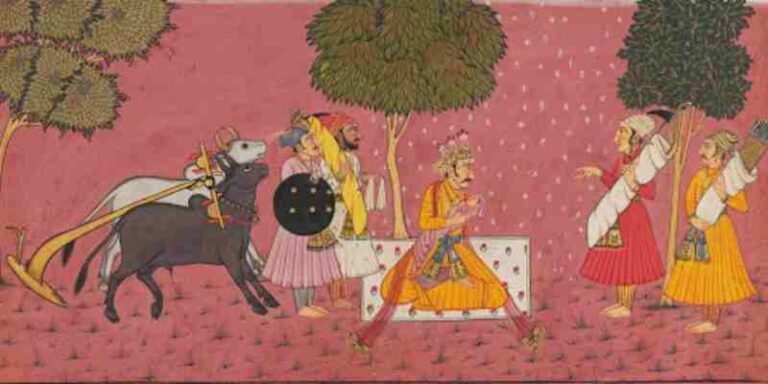Raja festival or Raja Parba is also known as Mithuna Sankranti. It usually falls in Sukhla Pakhshya of mid-June i.e., the end of Odia month Jyeshta and the arrival of Ashadha month. It is a 3-days long festival of womanhood celebrated in Odisha, India. It is believed that the mother Goddess Earth, i.e. wife of Lord Vishnu undergoes menstruation during the first 3 days.
The word Raja comes from the Sanskrit word “Raja’s” which means menstruation and when a woman menstruates, she is called “Rajaswala”. This festival became more popular in medieval times as an agricultural holiday marking the worship of Bhudevi, who is the wife of Lord Jagannath.
The faith behind the Raja festival
According to popular belief, as women menstruate, which is a sign of fertility, they should be taken proper care of. So all three days of the Raja festival are considered to be the menstruating period of Mother Earth, so Mother Earth should be taken proper care of. During this festival, all agricultural activities do not take place. As a mark of respect towards the Earth during menstruating days, all agricultural work is stopped and prohibited. Significantly, it is a festival for unmarried girls.
How Rajo is celebrated
The first day of the Raja Festival or Raja Parba is called “Pahili Raja”, the second day is known as “Mithuna Sankranti” and the third day is “Bhu Daaha” or “Bhumi Dahana”.The final and fourth day is “Basmati Snana”. The day before the first day is called “Sajabaja” or preparatory day. During this period, no agricultural activities take place as the goddess is allowed to take rest.
All the agricultural weapons are washed and worshipped on this day. On the day of Sajabaja, preparations for Raja celebrations start, spices are ground for three days, girls apply Mehendi on their hands and apply Haladi on their body and get ready for celebrating Raja.
During these three days, women and girls wear new dresses or Saree, apply “Alata” on foot, and beautiful ornaments to decorate themselves. Just as the earth prepares itself to satisfy its thirst by the incoming rain the unmarried girls of the family are groomed for approaching matrimony through this festival.
They take a rest from work and pass these three days in joyous festivity. All type of seasonal fruits is offered to The Goddess Mother Bhumi. The very first day, they rise before dawn, apply turmeric paste and oil and then take a purifying bath in the river. Especially, bathing for the rest of the two days is prohibited.
They don’t walk barefoot, don’t scratch the earth, don’t grind, don’t cut, don’t cook. They observe customs like eating cakes and rich food at the house of friends and relatives and moving up and down on improvised swings. A very special and popular “Raja song” is sung by the girls. Girls also play “Puchi Khela”, “Kith Kith” and many more games.

A major part of celebrating the Raja Festival or Raja Parba is eating betel leaves. Eating “paan” or “betel leaves” has become a ritual for youngsters during the three days of Raja. While girls scatter beauty, grace, and music all around during the festival, young men also engage themselves in playing cards and in games like “Bagudi”, “Kabaddi” etc.
Everyone eagerly waits for this Raja Festival on the eve of the onset of the Monsoon. Every people heartily welcomes the Raja Festival or Raja Parba as it is a remark of happiness, prosperity, and joyous atmosphere to the surrounding and the village.



